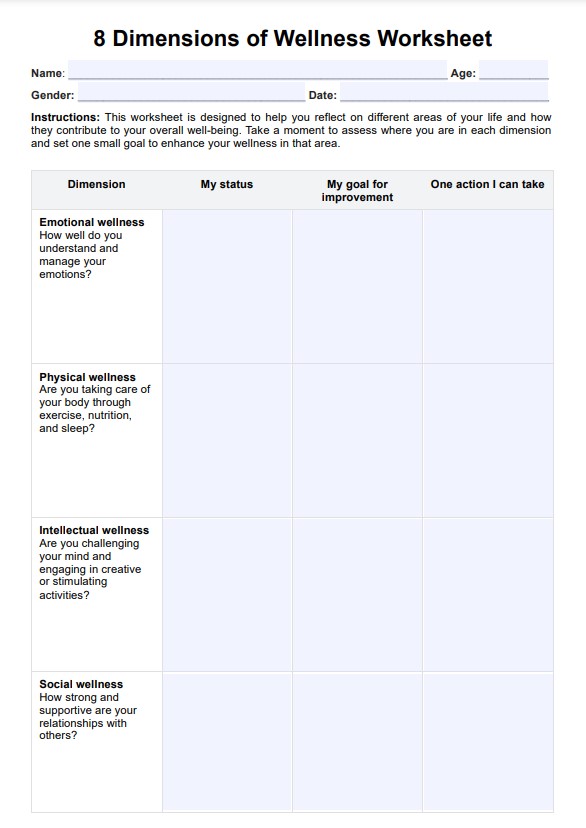According to SAMHSA's wellness model, the eight dimensions of wellness include physical, emotional, occupational, environmental, social, spiritual, intellectual, and financial wellness.

8 Dimensions of Wellness Worksheet
Issue the 8 Dimensions of Wellness Worksheet to assess your client's overall health across the eight dimensions. Get it for free.
8 Dimensions of Wellness Worksheet Template
Commonly asked questions
Wellness encompasses more than just maintaining a balanced diet and healthy nutrition. Part of it addresses various aspects of life, as outlined in the eight dimensions of wellness. This worksheet helps individuals identify and focus on these diverse areas, promoting the development of holistic and sustainable healthy habits by offering a comprehensive view of their overall well-being.
Yes. There's no problem with using this particular worksheet for personal use. Just don't use it to self-diagnose yourself with anything related to your mental health. You can use it for personal reflection, but if you think you have mental health issues, then it's best to see a professional to make more informed decisions and maybe an official diagnosis of a mental health issue.
EHR and practice management software
Get started for free
*No credit card required
Free
$0/usd
Unlimited clients
Telehealth
1GB of storage
Client portal text
Automated billing and online payments











